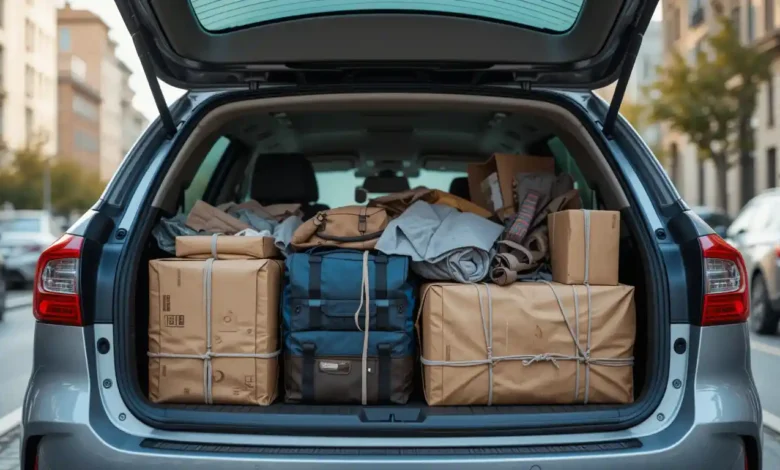Rena Monrovia: When You Transport Something by Car, Here’s What You Need to Know

Transporting items by car is a common task, whether for personal use or business purposes. However, ensuring that your cargo arrives safely and efficiently involves careful planning and execution. In this comprehensive guide, we’ll explore key aspects of transporting goods by car, with insights from Rena Monrovia on how to manage the process effectively. From preparation to execution, we’ll cover everything you need to know to make your transportation experience smooth and trouble-free.
Rena Monrovia’s Approach to Cargo Transportation
When transporting something by car, Rena Monrovia emphasizes the importance of understanding the logistics involved. Her approach highlights the need for meticulous planning and organization. Knowing the specifics of what you are transporting, including its size, weight, and fragility, is crucial for a successful journey. Rena Monrovia’s methods ensure that every detail is accounted for, from the initial packing to the final delivery.
Preparing Your Vehicle for Transportation
Preparing your car for transporting goods is a fundamental step in the process. Rena Monrovia advises inspecting your vehicle to ensure it is in good condition and suitable for the cargo. This includes checking the tire pressure, fluid levels, and overall cleanliness. A well-maintained vehicle is essential for safe transportation and reduces the risk of unexpected issues.
Choosing the Right Packing Materials
When you transport something by car, the choice of packing materials is crucial. According to Rena Monrovia, using the right materials can prevent damage and ensure that your cargo remains secure throughout the journey. Consider using sturdy boxes, bubble wrap, and protective padding to safeguard your items. Proper packing also helps in optimizing space within your vehicle.
Securing Your Cargo Properly
Securing your cargo is a critical aspect of transportation. Rena Monrovia recommends using straps, ties, and cargo nets to keep items in place. Properly securing your cargo prevents shifting and reduces the risk of damage or accidents. Ensure that the load is evenly distributed and does not obstruct the driver’s view or the vehicle’s operation.
Weight Limits and Legal Requirements
Each vehicle has specific weight limits and legal requirements for transporting goods. Rena Monrovia emphasizes the importance of adhering to these regulations to avoid penalties and ensure safe transportation. Check your vehicle’s manual for weight limits and familiarize yourself with local regulations regarding cargo transport.
Navigating Different Types of Cargo
Different types of cargo require different handling techniques. Rena Monrovia’s expertise includes strategies for transporting various types of items, from fragile antiques to heavy machinery. Understanding the unique requirements of each type of cargo helps in selecting the appropriate packing and securing methods.
Planning Your Route and Timing
Planning your route and timing is essential for a smooth transportation process. Rena Monrovia advises considering factors such as traffic conditions, road closures, and weather forecasts when planning your journey. Allow extra time for unexpected delays and ensure you have a clear route to follow.
Monitoring Your Cargo During Transit
During transit, it’s important to monitor your cargo to ensure it remains secure. Rena Monrovia suggests checking on the cargo periodically, especially on long journeys. If possible, have a passenger assist with monitoring to address any issues promptly.
Handling Emergencies and Unexpected Situations
Even with careful planning, emergencies and unexpected situations can arise. Rena Monrovia offers guidance on how to handle such scenarios, including having an emergency kit in your vehicle and knowing how to address common issues like a flat tire or a cargo shift.
Unloading and Inspecting Your Cargo
Upon reaching your destination, unloading and inspecting your cargo is the final step in the transportation process. Rena Monrovia stresses the importance of carefully unloading items and checking for any damage. Proper inspection ensures that any issues can be addressed immediately and that the cargo is in the expected condition.
Conclusion
Transporting something by car requires careful planning and execution to ensure a successful and safe journey. Rena Monrovia’s insights into the process highlight the importance of preparation, proper packing, and adherence to regulations. By following these guidelines, you can enhance the safety and efficiency of your cargo transport, ensuring that your items arrive at their destination in excellent condition.
FAQs
1. What are the best packing materials for transporting goods by car?
Rena Monrovia recommends using sturdy boxes, bubble wrap, and protective padding to safeguard your items during transportation.
2. How can I secure my cargo properly in the vehicle?
Use straps, ties, and cargo nets to keep your cargo in place and prevent shifting during transit.
3. What should I check before starting a journey with cargo?
Ensure your vehicle is in good condition, including tire pressure and fluid levels. Also, confirm that your cargo is securely packed and within legal weight limits.
4. How do I handle emergencies during cargo transportation?
Have an emergency kit in your vehicle and be prepared for common issues like flat tires or cargo shifts. Monitor your cargo periodically and address any problems promptly.
5. What should I do after arriving at my destination?
Carefully unload your cargo and inspect it for any damage. Address any issues immediately to ensure that your items are in the expected condition.




